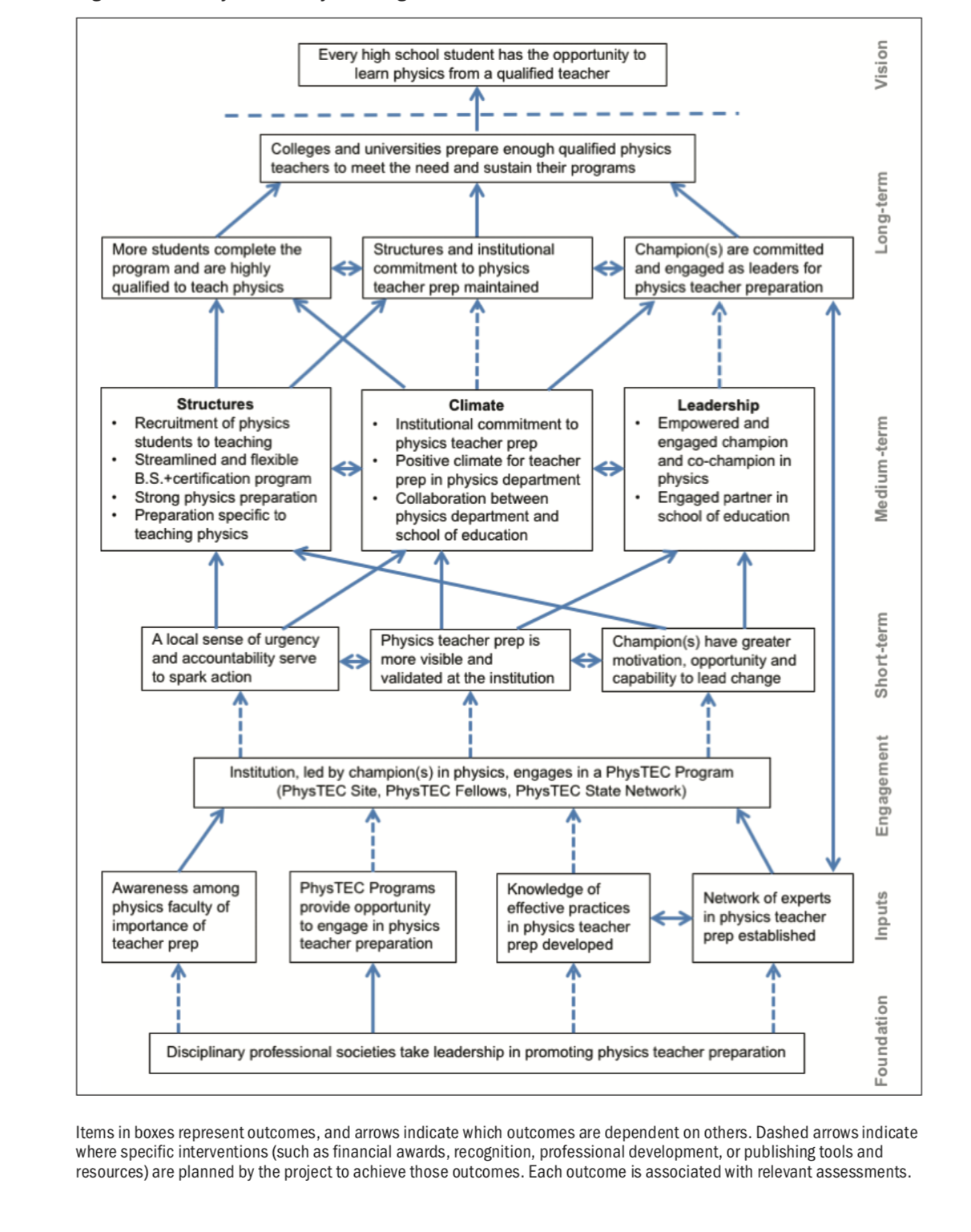
I’m Stephanie Chasteen, an external evaluator on NSF-funded projects aiming to improve STEM education at the university level. This is part 2 of a 2-part series on Theory of Change. In yesterday’s post, I shared the process I use to help clients develop Theories of Change (ToC). Today, I’ll share how I’ve been able to work with a client who serves as an evaluation champion, to develop organizational capacity in Theory of Change development.
As an independent consultant, sometimes I have limited capacity to affect internal processes at a client organization, but this is a success story. One of the first things that I did with this new client was to help them develop a ToC for their NSF proposal. This was a learning experience for both of us. Over four months, we worked through the Project Superwoman example from TheoryofChange.org together, consulted relevant literature, passed pictures of post-it notes back and forth, eventually moving to a PowerPoint diagram. We ended up with a diagram that we felt really represented the project, and helped to develop clear project strategy and evaluation measures. (The image here is our final version; see yesterday’s post for the in-progress version.)

Because we collaborated so closely on the original ToC, that project leader understood exactly what should go into a ToC, and on the next grant proposal she developed her own ToC without my help. I have since worked directly with her program manager to develop ToC diagrams for smaller initiatives within the original project, spreading that expertise.
Later, this project leader organized a monthly seminar for other directors at the organization on project evaluation. One of her staff presented about SMART goals, and the following month I facilitated a workshop about ToC. Two of those directors later spoke to me at length about their projects and I was able to guide them through the beginning of a Theory of Change process.
Ultimately, I now feel that I have had a deep impact on a national organization in terms of evaluative thinking, program strategy, and the ability to develop clear logic chains.
Lesson Learned:
Collaborate closely on a Theory of Change. It can be useful to create some drafts, but then spend significant time revising them with the project team. Just as important as the diagram itself is the learning that occurs through creating it – both in terms of the meaning for the project itself, and for the ability to create ToCs in the future.
Hot Tip:
Take opportunities to run workshops on Theories of Change, for clients or others. It’s an excellent way to learn about their projects, and spread evaluative thinking.
Lesson Learned:
When you find an evaluation champion at an organization, treasure this relationship. Such a champion can help your work as an external evaluator go further for their project, as well as let you have deeper impacts on the organization than otherwise possible.
Do you have questions, concerns, kudos, or content to extend this aea365 contribution? Please add them in the comments section for this post on the aea365 webpage so that we may enrich our community of practice. Would you like to submit an aea365 Tip? Please send a note of interest to aea365@eval.org. aea365 is sponsored by the American Evaluation Association and provides a Tip-a-Day by and for evaluators.
